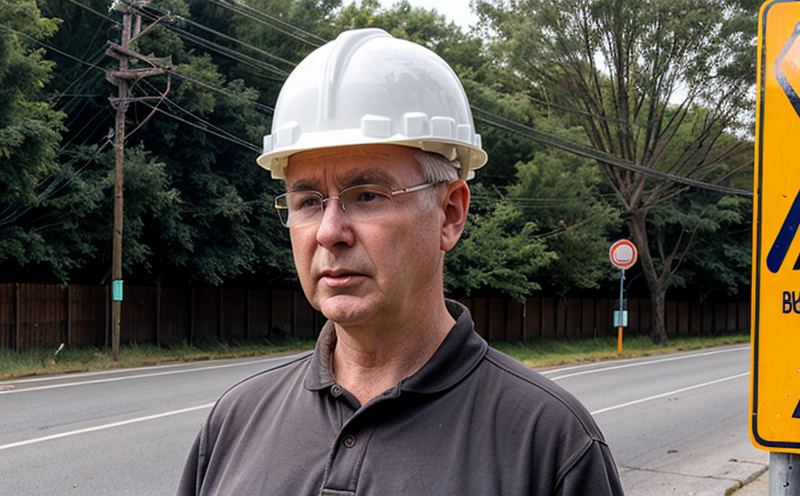EN 1793-2 Noise Absorption Properties of Barriers Testing
The European Standard EN 1793-2 provides a comprehensive framework for the determination of noise absorption properties of barriers, which is crucial in various sectors such as construction, urban planning, and environmental engineering. This standard ensures that barriers designed to mitigate noise pollution meet stringent performance criteria, thereby contributing to better living and working environments.
The testing procedure outlined in EN 1793-2 involves the measurement of sound absorption coefficients of barrier materials under controlled laboratory conditions. The primary purpose is to evaluate how effectively these barriers can absorb airborne sound, which helps in determining their suitability for noise mitigation applications. This standard is particularly relevant when dealing with scenarios where noise pollution poses significant health and comfort issues.
The test methodology involves placing the barrier material between two parallel walls within a reverberation room, ensuring that it spans from one wall to another. Sound sources are placed at specific distances from the barrier to generate controlled sound fields. The absorption coefficients are then calculated based on the decay times of sound in the space before and after the barrier is introduced.
Understanding the noise absorption properties of barriers is essential for several reasons:
- To ensure compliance with national and international regulations concerning noise pollution control.
- To optimize design parameters, thereby enhancing the effectiveness of noise mitigation efforts.
- To provide reliable data that can be used in regulatory submissions or tender documents.
The results from EN 1793-2 testing are critical for various stakeholders:
- Quality Managers: Ensure consistent product quality and performance.
- Compliance Officers: Demonstrate adherence to regulatory standards.
- R&D Engineers: Innovate new materials and designs that meet stringent noise absorption criteria.
- Procurement Personnel: Select suppliers who can deliver high-performance barrier products.
The testing process is meticulous, requiring precise measurement techniques to ensure accurate results. Compliance with EN 1793-2 not only enhances the performance of barriers but also contributes to sustainable urban planning and environmental protection efforts.
In conclusion, EN 1793-2 provides a robust framework for assessing noise absorption properties of barriers, which is vital for mitigating noise pollution effectively. By adhering to this standard, organizations can ensure that their products contribute positively to the quality of life in communities.
Why Choose This Test?
- Informed Decision-Making: Provides accurate data for selecting appropriate barrier materials and designs.
- Regulatory Compliance: Ensures that products meet international standards, enhancing market access.
- Optimized Performance: Helps in achieving the best noise reduction outcomes by evaluating material efficiency.
- Sustainability Focus: Supports environmentally friendly practices by identifying barriers that effectively reduce noise pollution.
The EN 1793-2 test is essential for anyone involved in urban planning, construction, or environmental engineering. It offers a clear path to achieving effective noise mitigation while ensuring compliance with international standards.
Quality and Reliability Assurance
The quality of the testing process is paramount in providing reliable results that can be trusted for regulatory submissions or internal decision-making processes. Our laboratory adheres strictly to EN 1793-2, ensuring that every test conducted meets the highest standards of accuracy and precision.
Our team of experts ensures that all specimens are prepared according to the specified guidelines outlined in the standard. This includes precise cutting of samples to ensure uniformity across tests. Calibration of instruments is performed regularly to maintain consistency and reliability throughout testing sessions.
The use of advanced instrumentation, including sound level meters and specialized measurement equipment for reverberation rooms, guarantees that data collected during testing are accurate and reproducible. Our laboratory also employs rigorous quality control measures to minimize errors and ensure that each test result can be relied upon.
By adhering strictly to EN 1793-2, we provide our clients with confidence in the reliability of their results. This is crucial for those who need to demonstrate compliance or optimize performance based on tested data.
Customer Impact and Satisfaction
The impact of our services extends beyond mere compliance; it contributes significantly to the overall well-being of communities. By providing accurate noise absorption properties testing, we help clients make informed decisions that lead to better acoustic environments.
Our comprehensive approach ensures that customers receive more than just test results—they also gain valuable insights into how their products perform under different conditions. This knowledge empowers them to refine their designs and materials further, leading to improved product performance and customer satisfaction.
We understand the importance of timely delivery and high-quality service. Our clients can expect efficient turnaround times without compromising on the quality of our tests. We pride ourselves on delivering accurate data that helps stakeholders make informed decisions confidently.
Customer feedback is essential in continuously improving our services. We value your input, ensuring that we meet or exceed expectations every time. Your satisfaction is our priority, and we strive to provide solutions tailored specifically to your needs.





